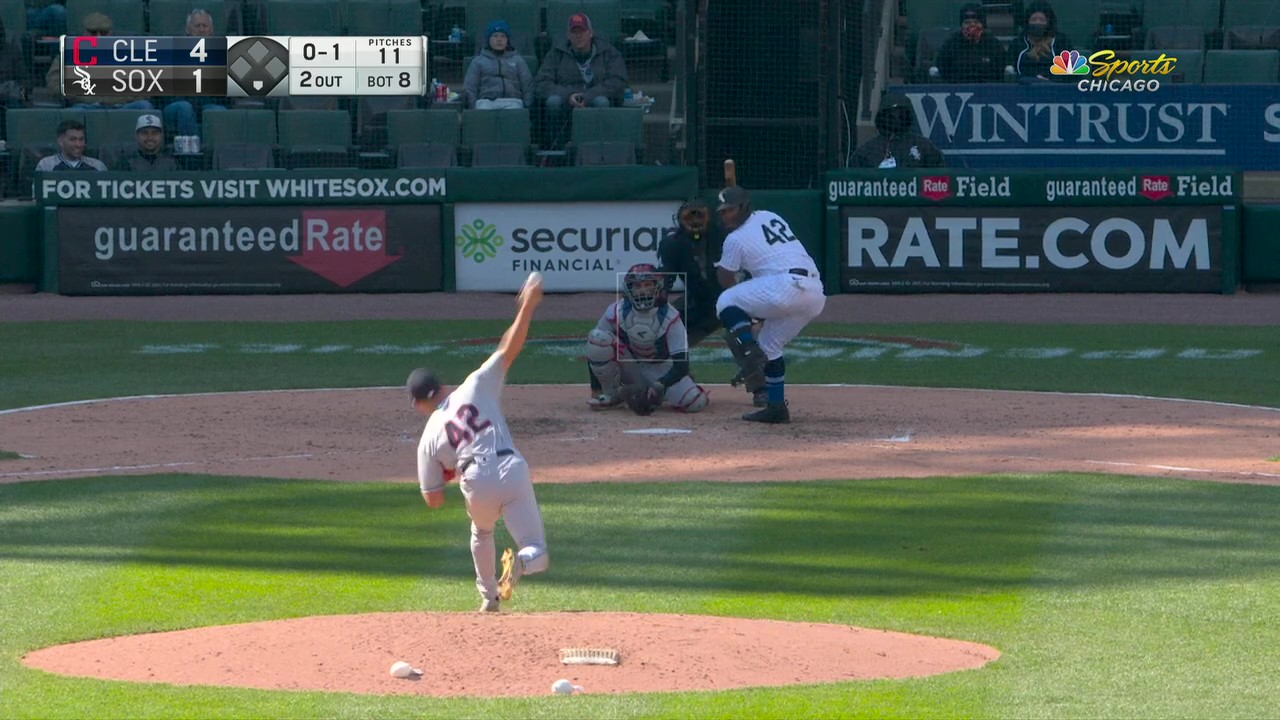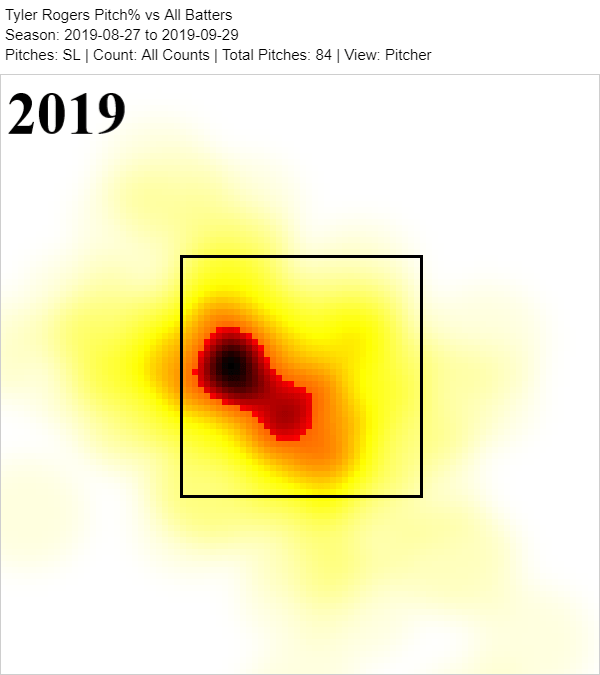The San Francisco Giants have been the biggest surprise of 2021. To begin the season, FanGraphs had their playoff odds tabbed at 5.7% percent, and at the time of writing, their playoff odds have moved up more than seven-fold to 43.7%. As is well documented, Evan Longoria is having his best season since 2016, and Buster Posey is tracking towards a career year with his bat. But I’m not here to write about their spry-looking veterans, nor their new-look starting rotation. No, I’m here to write about a pitcher holding it down in the back of their bullpen. That pitcher is Tyler Rogers.
I wrote about Rogers what feels like eons ago in January of last year. I hadn’t known about him until Kyle Horton tipped me off to him. Around this time, Horton had started pitching for his college team, and was throwing from a submarine arm slot. Since submariners are a rare breed nowadays, he looked to Rogers as one template for how he could approach hitters. What interested me then (and interests me now) is how Rogers’ approach differs from more conventional pitchers.
If you think about two pitchers holding an identical grip on a ball, their pitches are going to move differently based on their arm slot. One might get more rise, while the other will get more run. Now take a pitcher at one release point extreme (say, James Karinchak) and compare him to Tyler Rogers, and those differences get exacerbated. Karinchak has a herky-jerky delivery wherein he leans back and steps to his left, hinging his torso significantly to the first-base side so he can throw directly over the top, while Rogers more gracefully hinges at his hips towards the third-base side and releases the ball inches above the dirt of the mound.
If that’s hard to visualize, here’s Karinchak:

And here’s Rogers:

Until this morning, these two had the same pitch classifications. Karinchak has a fastball with plus carry and a firm curveball. Rogers is the opposite. He throws a buzzsaw fastball and what was considered the most unique curveball in baseball is now the most unique slider in baseball. We’ll get to that.
While Karinchak leads the league in strikeout rate, Rogers is down in the bottom-25. That doesn’t mean he can’t be one of the better relievers in baseball, but theoretically, it does make it less likely. Dating back to 2019, Karinchak is the third-best reliever by xwOBA. That’s to be expected from such a potent reliever who misses bats. Scroll down just a touch, though, and you’ll find that Rogers ranks right between elite relievers in Aroldis Chapman and Austin Adams in xwOBA. You may find that surprising, and to an extent, I do too, but I think it can be pretty easily explained.
Here’s something to start us off. An appetizer of sorts. Rogers has given up just one single barrel in his career, which spans over 1000 pitches. Here’s the barrel in question:
https://gfycat.com/hugebeneficialhornedviper
It falls just short of 100 mph, but it’s a barrel. In terms of overall pitches, Rogers holds the best barrel rate in baseball. When isolating batted balls as our denominator, he still has the best barrel rate in baseball. And so, perhaps it’s not surprising that, since 2019, Rogers has ranked the lowest in baseball in xwOBAcon. At .259, he bests players like Aaron Bummer and Zack Britton, who are esteemed for their ability to suppress barrels. In other words, by the numbers, no one has been better at mitigating hitter-friendly contact than Rogers. That’s born out in his actual and expected numbers, but it feels pertinent to ask why.
May Bay has been uploading some really interesting charts looking at spin direction and spin rate. The farther from the center, the higher the spin rate, while the orientation around the circle is based on spin direction. Compare the respective charts of Tyler Glasnow and Rogers:
Tyler Rogers. Life as a submariner. pic.twitter.com/a232eZJFv5
— Max Bay (@choice_fielder) May 20, 2021
If you consider these charts from the pitcher’s perspective, you’ll find that their fastballs’ spin directions closely mirror that of their release points. Glasnow throws from a high release point, and Rogers throws from a low one. Looking at a clock, Glasnow’s fastball spins at about 12:30, while Rogers’ spins at about 4:45. Then, while Glasnow’s breakers spin from 6:45 to 7:45, Rogers’ slider spin direction is at 10:00, which, aside from Eric Yardley, is unheard of.
Given the interaction between Rogers’ arm slot and the spin direction of his slider, its spin actually mirrors that of a fastball. Aside from the forces of gravity, it’s got the vertical movement of a fastball, as well as the sweep of a slurve. Here it is in action, courtesy of Rob Friedman:
Tyler Rogers, UFO Slider (With Tail) pic.twitter.com/EIH1h8SIpe
— Rob Friedman (@PitchingNinja) April 14, 2021
His slider starts rising, and then it just rises and rises until it’s at the hitter’s eye level. He gets a swing anyway. Some pitchers do this with their secondaries. Lucas Giolito elevates his changeup, and some pitchers will try to nick the top of the zone with their curveballs. But this isn’t really a breaker at all. Mostly because it…doesn’t break. There’s no pitcher in baseball that elevates his slider quite like Rogers. And that’s by design. There’s not another pitch like Rogers’ slider.
Consider how he has changed his slider location between years:

The concentration of his pitches isn’t as tight as in previous years. But he’s clearly been elevating his slider more this year than in the past, and running it out of the zone more, too. In my opinion, therein lies the key to his improvement. If you think about a pitcher like Gerrit Cole, he excels because of the “rise” of his fastball, where batters swing under it because it ends up being located higher than they anticipate. I know it’s weird, but the same is true of Rogers’ slider. It has the flattest vertical approach angle in baseball, which means that if there’s a so-called riseball that exists in baseball, this is it. This year, Rogers has started to use his slider in the way that Cole or Justin Verlander often use their fastballs. It’s genius.
If you think about the barrel that Rogers gave up above, you’ll notice that it was low in the zone, and in the middle of the plate. Now that Rogers is moving away from that and more towards an elevated slider, we should see fewer batted balls in the “sweet spot.” One way to know if any given “rising” offering is working is to look at whiffs. Those haven’t really been there. Another way, though, is to see how often hitters are getting under it. This year, Rogers’ slider ranks second-highest in pop-up percentage at 24%. If you pretend his slider is just a slow, rising fastball, you’ll find that the only fastball that outclasses his riseball by pop-up percentage is Chad Green’s.
The focus here has been Rogers’ slider, but his most-used pitch is his fastball, and it’s really good too. It’s such a slow fastball that it allows the forces of gravity to act upon it unlike any other pitch in baseball. It’s an extremely heavy pitch. Because of the bowling ball-like effect it has, Rogers’ fastball induces more ground balls that any other pitcher.
The approach that Rogers is leaning on is completely insane, in the best way. Hitters just can’t square him up. That probably shouldn’t be a surprise. Barry Bonds couldn’t square up Jennie Finch’s underhand riseball. Albert Pujols couldn’t either. He’s using a 71 mph slider as a sweeping, rising fastball up in the zone that hitters pop up for easy outs. Then there’s his 82 mph fastball that he uses as a buzzsaw down in the zone. It’s so heavy that 89% of the time it’s put into play, it’s a ground ball. 89%! Like his slider, that makes for a lot of easy outs, just on the ground instead of in the air. He’s the antagonist to launch angle tightness.
Right now, Tyler Rogers is the most extreme ground ball pitcher in MLB. When he’s not inducing bat-shattering groundouts, he’s often creating pop-ups that mostly end in outs. He has over 70 innings worth of evidence to suggest that he is, in fact, the best contact suppressor in baseball. Given his approach, and given his results, there’s not much evidence to think otherwise. He doesn’t look like your conventional closer, but if you ask me, that might be a good thing. Pitch classification? Poppycock!
Photo by Bob Kupbens/Icon Sportswire | Adapted by Jacob Roy (@jmrgraphics3 on IG)

